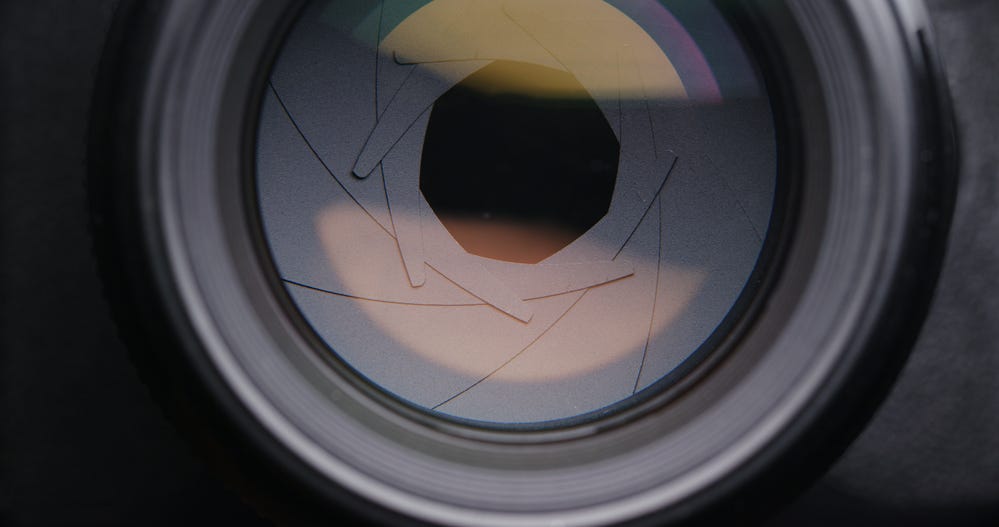In photography the single most element that creates maximum drama is light.
Just like our eyes open wider in the dark and squint narrow in the sun, aperture simply defines how much we open the lens of a camera to let light enter.
But it is not just about light. It also impacts the sharpness of pictures by controlling the depth of field, depending on the lens you are using. Each lens comes with its own focal length, but its depth of field (check earlier blog), can be controlled to a large extent through aperture control.
So what really happens?
As aperture changes in size, it alters the overall amount of light that reaches the camera sensor – and therefore the brightness of the image.
A large aperture (a wide opening) will pass a lot of light, resulting in a brighter photograph
A small aperture does just the opposite, making a photo darker
However a large aperture can also create a lot of foreground and background blur, while a small aperture creates a much sharper image overall.
This is because a large aperture creates a shallow depth of field (see image below) which causes only a specific portion of the image to be in focus. This is perfect for portrait photography where the focus on the person requires the foreground and background to be blurred to create tension and drama.
Similarly a small aperture creates a deeper depth of field (see image below) which causes a significant portion of the image to be in focus, perfect for landscape style photography.
One thing that needs to be remembered though:
When it comes to aperture — f/1.4 is much larger than f/22
It means that the lens opens up much more at f/1.4 than at f/22
Easy tip - lower the aperture “number” - larger is the actual aperture (more light gets in the lens)
So how does F stop connect to aperture?
You know those F numbers on a camera LCD/ viewfinder? They look like F8 (f/8), F16 (f/16), F32 (f/32) etc and are pretty confusing when you start dealing with a DSLR or Mirrorless.
However, there is an easier way to interpret what they mean. F stop basically denotes the size of the aperture for a particular picture.
Or to make it even more simpler, how much light the lens lets in.
Depending on your subject and/or light condition - you can make your aperture smaller (less light) or bigger (more light) but the level to which you can make it smaller or larger depends on the make of the lens. Every lens has a limit to how large or how small the aperture can get, because each lens has its own predefined focal length. Take a look at the specifications of your lens, and it will state what the maximum and minimum apertures are. For most users, the maximum aperture figure is more important, because it tells us how our lens will fare in low light conditions.
The make of the lens and the aperture size is where the F stop becomes important. Depending on this F stop number, you can control the output you want to create in different light conditions.
A detailed cheat sheet to utilising apertures
F 0.95 - F 1.4 : Only available in extremely costly prime lenses but perfect for low light photography ( Milky Way) , weddings, corporate events
F 1.8 - F2.0 : Again only available in specific prime lenses and not as good in low light conditions, they are still miles better than what you get with the best camera phones
F 2.8- F4 : These are most available in multipurpose lenses which are perfect for travel, sports and everyday photography
F 5.6 - F 8 : Perfect for landscape and architecture with majority of the picture in focus and with sharpness at premium
F8 - F16 : Has good use case in landscape, architecture but would create depth of field and is mostly used for Macro photography
F22 : Generally not used that much. Photographers generally go and do something called focus stacking instead of losing sharpness at F 22 . (more on focus stacking in a separate blog)
What are blades when we talk about aperture?
If you half click a camera lens you can see the aperture opening up. What you will find, is that the lens looks like it has circular blades which open and close up.
Lens literature often talks about the number of blades and this is important for those who are interested in astro photography, lens flares and sunbeams
Odd number of blades, double the number of sunbeams
Even number of blades, same number of sunbeams
So in summary, here is a drawing to remember the basics and get started
Summary:
Aperture plays an role in photography and here are the key factors it can influence in your journey as a photographer
The brightness of your photos
Depth of field
Sharpness loss due to diffraction
Sharpness loss due to lens quality
Starburst effects on bright lights
Visibility of camera sensor dust specks
The quality of background highlights (bokeh)
Focus shift on some lenses
Ability to focus in low light (under some conditions)
Control amount of light from flash



